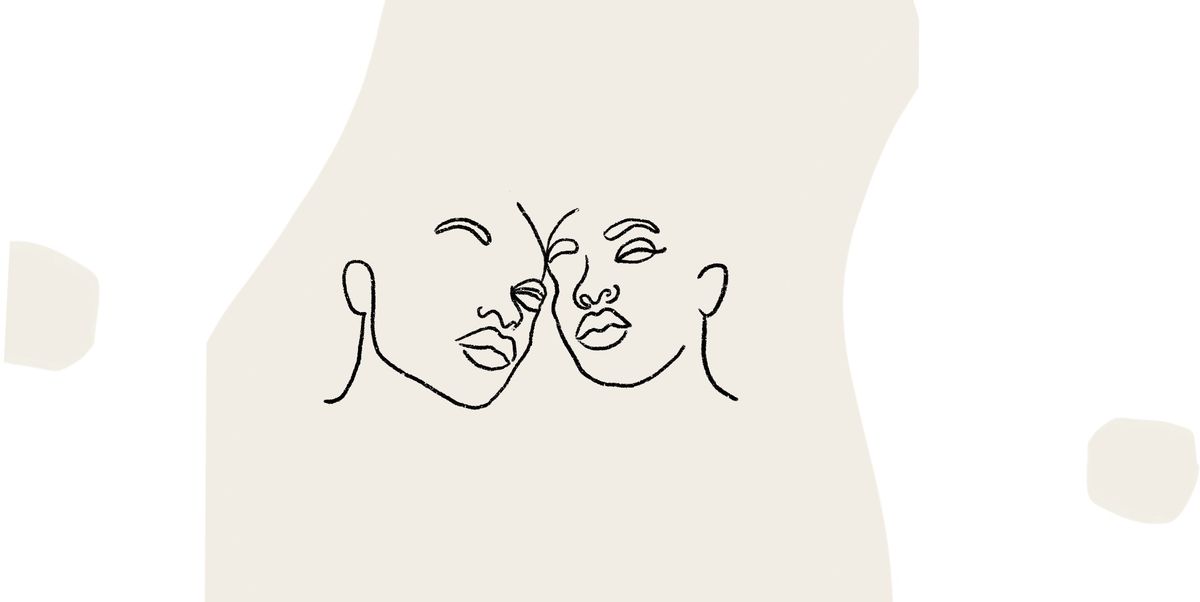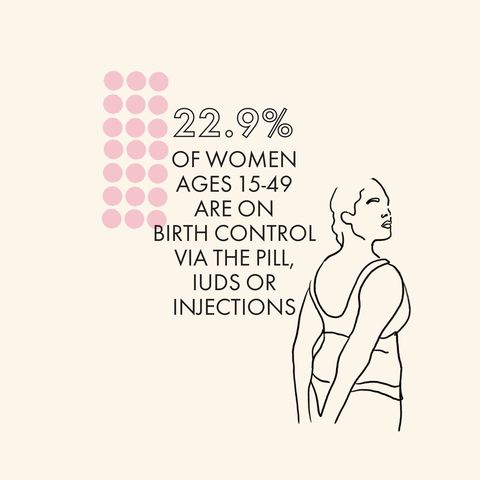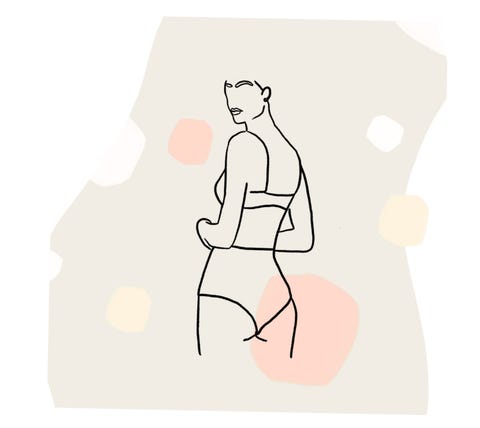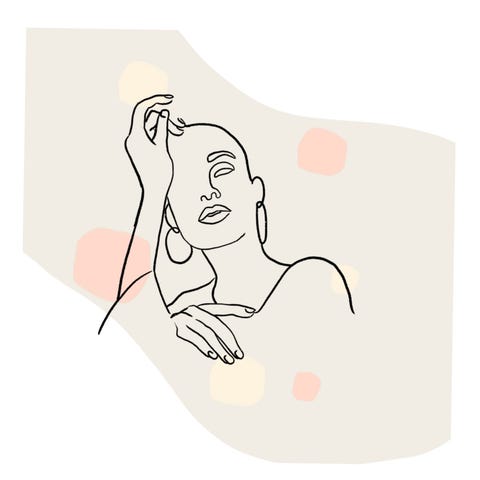As adults, we often have to make decisions that ultimately sacrifice a personal want. For instance, we want to stay up and finish binging Selling Sunset, but we must turn off the tele for a decent night’s sleep.
On a more serious note, we may want clear skin, but hindering a potential pregnancy often takes precedent. If you’re on birth control, you’ve heard about or maybe even experienced acne as a side effect of taking hormones on a daily basis. You also gamble with flare-ups when you decide to remove contraception altogether. Oftentimes, it feels like we must be plagued with one issue in order to solve another. But, if you’ve decided it’s time to try for a baby, or you just want to give your body a hormonal break, expect a 6-12 month transition for your body after getting off contraception like the pill or an IUD.
According to the Centers for Disease Control, 22.9% of women ages 15-49 are on birth control via the pill, IUDs or injections. Birth control has been prescribed for a variety of reasons outside of its intended use (to prevent pregnancy): to regulate heavy menstrual bleeding and disorders like polycystic ovary syndrome (PCOS) and premenstrual dysphoric disorder, and to help with acne.
More and more doctors and dermatologists are prescribing the pill specifically for hormonal breakouts. “It’s one of the most common things in dermatology that we’re prescribing right now, especially to teenagers and people in their early 20s to treat their acne,” explains Dr. Nancy Samolitis, board-certified dermatologist and co-founder of Facile Dermatology + Boutique in Los Angeles. “We’re trying to avoid using antibiotics, which used to be the gold standard (in acne reduction). Unfortunately, when you take antibiotics you have to be on them for a very long time. Our other option is Accutane. Accutane is a great drug and it works, but not everybody is a candidate,” she said.
Birth control can be an agent for breakouts or can be used to solve them; this is pretty common knowledge among users. However, one side effect of hormonal contraception that I wasn’t privy to when I first got on it was hyperpigmentation. I was taking the pill (Yaz, which contains both estrogen and progesterone) for several years before I was informed by esthetician Renée Rouleau that I had melasma. The dark spots I had on my face, present on my forehead, cheeks, and a little on my upper lip, were in fact not remnants of self-tanner I hadn’t scrubbed off. (To be young and naive.) It was hyperpigmentation resulting from the hormones I was taking from oral contraception.
When I decided to get off Yaz, one of the welcomed byproducts was that my melasma almost disappeared. With a few laser facials and the use of hydroquinone, an ingredient that lightens the skin, one would be hard pressed to discover I ever experienced it. But another part of the aftermath was that my skin broke out.
Making sure I am in control of my body is a priority — even as a diehard skin care junkie. Getting off the pill was a smart decision for me at the time, and one I was privileged to make without worrying about health issues. Getting an IUD four years later was also the intelligent thing to do, as I started a new relationship. But as I start to think about the future, like many women, I’ve been considering how long being on hormonal birth control is too long, and what will happen to both my body and my skin once I decide to give it up, for whatever reason that may be.
Your Body
Our body has to adapt to receiving the hormones that will stimulate ovulation again. “Most hormonal contraception interferes with the signals sent from the pituitary gland (brain) to prevent ovulation, or release of an egg from the ovaries each month,” said Dr. Lucky Sekhon, Board certified OBGYN, Reproductive Endocrinologist and Infertility Specialist.
“When stopping these hormones, it can sometimes take the brain a few cycles to ‘wake up’ and begin to pump out the necessary hormones that stimulate the ovaries and drive the process of ovulation,” said Sekhon. Once ovulation normalizes, you will experience your period again (if you were taking a pill to continuously skip your period) and will experience symptoms like premenstrual syndrome which includes “heightened depression/anxiety in the week leading up to menstruation, breast soreness after ovulation, an increase in cervical mucus around the time of ovulation, and skin changes such as acne leading up to menstruation,” according to Dr. Sekhon.
Your Skin
And what can we expect from our skin when we decide to get off birth control?
Mostly, experts acknowledge your skin might break out for an extended period of time, but it’s crucial to think about what your skin was like when you first got on contraception. Just as the body adapts to receiving hormones that will stimulate the ovaries and begin the process of ovulation again, you should expect that any skin issues you might have dealt with before your were on hormonal contraception to return. Dr. Sekhon says you may experience what she refers to as “rebound acne.”
“Some women take birth control pills containing a special form of progesterone, which works to prevent acne by controlling the effects of testosterone on skin. When stopping this, they may experience ‘rebound acne’,” said Dr. Sekhon.
Renée Rouleau, esthetician and founder of her eponymous skin care line, mimics this sentiment. “Many people go on birth control pills in an attempt to lessen breakout activity due to their bodies fluctuating hormones. There are fluctuations in androgen hormone levels right before and during a woman’s period that can stimulate sebaceous glands to produce excess oil,” said Rouleau. “Since oil encourages bacteria, along with dead cells in the pore lining, this can cause breakouts to occur. The pill can help reduce breakouts due to their effect on natural hormonal balance. However, when they go off of it, their body may return back to the way it was and breakouts can slowly start to appear,” she said.
She clarifies that timing is key. If you went on the pill as a teen or to deal with adult acne, you may be in the clear if it’s been a few years. “Depending on how long someone has been on the pill, they may have outgrown the hormonal fluctuations so they very well may find that going off the pill does not make their breakouts return. It just varies by individual,” she said.
When it comes to IUDs, if you experience acne after getting it inserted, you may actually benefit from the removal.
“Hormonal IUDs may trigger acne for some women because they release progestin, an artificial form of the hormone progesterone, into the body,” said Rouleau. When progesterone levels are increased, androgenic hormones — like testosterone — can also increase in a woman’s body. Androgens cause acne by overstimulating oil glands. “By removing the IUD, you may experience fewer breakouts if you think your IUD may be the cause,” she said.
Additionally, melasma is often called the “mask of pregnancy” because many women experience it for the first time when they’re carrying, due to the influx of hormones. Same can be said for getting on birth control.
“When women are on the pill, a common side effect is to develop hyperpigmentation (brown patches) often above the upper lip, cheeks and forehead,” said Rouleau. “Going off the pill will allow that to fade and with the intervention of professional treatments such as peels, it can be fairly easy to get rid of.”
How to Prepare Yourself For Getting Off Hormonal Birth Control
To prepare yourself, expect a 6-12 month transition for your body after getting off contraception like the pill or an IUD. Dr. Sekhon advises it may take 3-6 months for your body to recover, especially if you’re trying to conceive. If you haven’t had your period after 6 months, she recommends getting an evaluation by a doctor to ensure there aren’t any further ovulation issues.
For your skin, Dr. Samolitis explained it can also take several months to a year for your skin to get back to normal, which is where topical medications come into play.
“If they want to do non-medical intervention, we have topical medications — like a prescription called Aczone,” she said. Ingredients like benzoyl peroxide and clindamycin, which are often used for teenage acne and can be irritating to the skin, do not work well for adult acne in women, according to Samolitis. “Aczone doesn’t have all those side effects. And it seems to work better for the purely inflammatory acne.”
She also suggests over the counter topicals like Niacinamide — an ingredient we’re seeing more and more of. “This is something that’s cheap that you can buy at CVS or on Amazon — 500mg twice a day. As a bonus, it also reduces your risk of skin cancer.”
Rouleau suggests creating an environment for the skin where breakouts are less likely to occur by using gentle, non-drying products with an anti-microbial effect to allow less bacteria on the skin’s surface and within the pore.
“You can also introduce a product that addresses the microbiome,” said Rouleau. “A product with prebiotics can be very helpful to add into a skincare routine. Simply put, prebiotics encourage our skin to produce more ‘good’ bacteria that can help balance the skin and fight acne.” She suggests products from her Rapid Response line, including the Detox Masque and Toner.
Outside of a consistent-yet-gentle skin care routine and prescription options, it’s important to cut possible dietary triggers. Cut high glycemic, processed foods that may spike your insulin and can cause acne, as well as dairy — although Dr. Samolitis says that isn’t the case for everyone. Options like regular facials can help with clogged pores, and red light can deliver results for inflammation. If you’re looking to conceive and are dealing with breakouts, a new option on the market is Sebacia, an alternative to drugs like Accutane. It targets the oil gland and can help clear acne after three treatments without the harsh side effects. Samolitis offers the treatment at Facile.
Together, these can help alleviate post-BC skin issues a little while your body recuperates, but ultimately time is your friend.
This content is created and maintained by a third party, and imported onto this page to help users provide their email addresses. You may be able to find more information about this and similar content at piano.io




